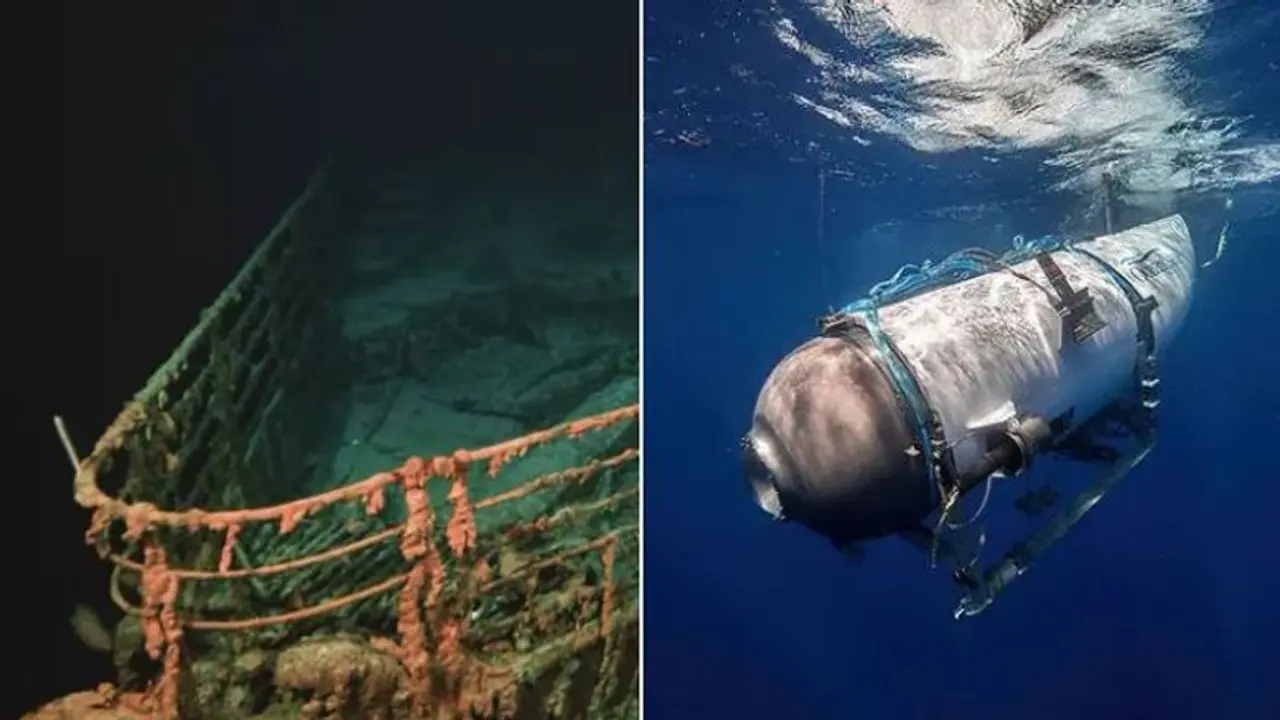As rescue teams race against time to save five people aboard the missing Titanic submersible, an immersive new video shows how deep it could be in the Atlantic Ocean.
A haunting and dramatic animated video has demonstrated just how deep the missing Titanic submersible could go as rescue workers rush against time to save five people. The animation company MetaBallStudios from Spain produced the clip, which gradually moves over a synthetic aquatic landscape. As it moves along, the heights of numerous monuments, including the Eiffel Tower, the Statue of Liberty, and the Burj Khalifa, the highest structure in the world, are shown in the water. The camera eventually descends to the North Atlantic's floor at a depth of 12,000 feet (3,700 metres), where the Titanic's wreckage is located.

On Sunday morning, the US company OceanGate's Titan submarine began its descent, but shortly after, all communication with its mothership was lost. Along with his son Suleman, British millionaire Hamish Harding, OceanGate CEO Stockton Rush, and French adventurer Paul-Henry Nargeolet, one of Pakistan's wealthiest individuals, Shahzada Dawood, is on board the ship.
As of Wednesday morning, the five people only have around a day's worth of oxygen left, according to the police. Authorities alerted the public on Sunday after the ship disappeared after less than two hours of travel.
At 2:30am EST (7:30am GMT) on Sunday, the sub began its £195,000 per person ($248,094) journey off the coast of Newfoundland, Canada. It is known that Titan sends a warning to its mothership, the Polar Prince, every fifteen minutes in order to communicate with individuals on Earth.
At 10 a.m. EST (3 p.m. GMT) on Sunday, while they were immediately above the Titanic, the five crew members sent their last "ping" to the mothership. This would suggest that they have moved to the ocean floor, as the wreckage is split in two at a depth of about 12,500 feet (3,800 metres).
To put the depth into context, the Grand Canyon, a natural geological formation in Arizona, is about 6,000 feet (1,828 metres) – less than half the depth of the Titanic's wreckage. The animation demonstrates how insignificantly tall other monuments are in comparison to this, with the Statue of Liberty standing at only 305 feet (93 metres) high, the Eiffel Tower at 1,083 feet (330 metres), and the Empire State Building at 1,250 feet (381 metres).
Even the Burj Khalifa in the United Arab Emirates, the tallest structure in the world at 2,217 feet (675 metres), seems insignificant in comparison to the North Atlantic's depths. At 6,000 feet (1,828 metres), or less than half the depth of the Titanic's debris, the enormous Grand Canyon is no different.
Although it has been called a submarine, the object is actually a submersible. A submersible needs to be supported by a surface vessel or shore staff, but a submarine is a self-sufficient cruiser with its own power supply and air replenishment system. According to Marine Insight, submarines can go a maximum distance of 1,476 feet (450 metres), which is somewhat higher than Chicago's Willis Tower.
However, OceanGate's Titan submarine can dive down to a maximum depth of 13,123 feet (4,000 metres), which is over 800 per cent deeper than this. Although this is deeper than the seafloor of the North Atlantic, analysts worry that a US Navy submarine, with its capabilities only reaching 2,000 feet (609 metres), may not be able to reach it. As a result, remote-controlled vehicles with a maximum depth of 20,000 feet (6,096 metres) may be the only option to save them.
David Gallo, who owns the salvage rights to the Titanic's wreck site, told CNN, "One of the biggest things is where is it? Is it on the bottom, is it floating, is it mid-water? That is something that has not been determined yet... we will have to wait and see and hope for the best. The water is very deep - two miles plus. It's like a visit to another planet, it's not what people think it is. It is a sunless, cold environment and high pressure."
